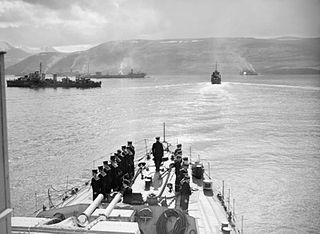
PQ 17 was the code name for an Allied Arctic convoy during the Second World War. On 27 June 1942, the ships sailed from Hvalfjörður, Iceland, for the port of Arkhangelsk in the Soviet Union. The convoy was located by German forces on 1 July, after which it was shadowed continuously and attacked. The First Sea Lord Admiral Dudley Pound, acting on information that German surface units, including the German battleship Tirpitz, were moving to intercept, ordered the covering force built around the Allied battleships HMS Duke of York and the USS Washington away from the convoy and told the convoy to scatter. Because of vacillation by Oberkommando der Wehrmacht, the Tirpitz raid never materialised. The convoy was the first large joint Anglo-American naval operation under British command; in Churchill's view this encouraged a more careful approach to fleet movements.

The Arctic convoys of World War II were oceangoing convoys which sailed from the United Kingdom, Iceland, and North America to northern ports in the Soviet Union – primarily Arkhangelsk (Archangel) and Murmansk in Russia. There were 78 convoys between August 1941 and May 1945, sailing via several seas of the Atlantic and Arctic oceans, with periods with no sailings during several months in 1942, and in the summers of 1943 and 1944.

Operation Sportpalast, also known as Operation Nordmeer, was a German naval raid between 6 and 13 March 1942 against two of the Allied Arctic convoys of World War II as they passed through the Norwegian Sea. It was conducted by the battleship Tirpitz, three destroyers and eight submarines. The German ships were unable to locate either of the convoys but sank a merchant vessel that was sailing independently. The Allies attempted to intercept the German force, also without success.
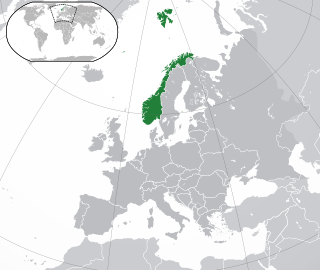
Convoy PQ 16 was an Arctic convoy of British, United States and Allied ships from Iceland to Murmansk and Archangelsk in the Soviet Union during the Second World War. The convoy was the largest yet and was provided with a considerable number of escorts and submarines. QP 12, a return convoy, sailed on the same day
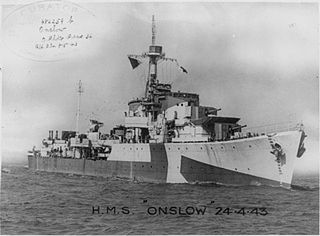
HMS Onslow was an O-class destroyer of the Royal Navy. The O-class were intermediate destroyers, designed before the outbreak of the Second World War to meet likely demands for large number of destroyers. They had a main gun armament of four 4.7 in guns, and had a design speed of 36 kn. Onslow was ordered on 2 October 1939 and was built by John Brown & Company at their Clydebank, Glasgow shipyard, launching on 31 March 1941 and completing on 8 October 1941.
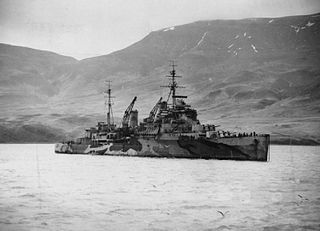
PQ 13 was a British Arctic convoy that delivered war supplies from the Western Allies to the USSR during World War II. The convoy was subject to attack by German air, U-boat and surface forces and suffered the loss of five ships, plus one escort vessel. Fifteen ships arrived safely.
MV Atheltemplar was a motor tanker built by Lithgows, Port Glasgow. She was launched on 15 April 1930, registered in Liverpool and operated by the United Molasses Co Ltd of London. She was transferred to Athel Lines on 1 January 1940.

HMS Fury was an F-class destroyer built for the Royal Navy in the 1930s. Although assigned to the Home Fleet upon completion, the ship was attached to the Mediterranean Fleet in 1935–36 during the Abyssinia Crisis. During the Spanish Civil War of 1936–1939, she spent time in Spanish waters, enforcing the arms blockade imposed by Britain and France on both sides of the conflict. The ship escorted the larger ships of the fleet during the early stages of World War II and played a minor role in the Norwegian Campaign of 1940. Fury was sent to Gibraltar in mid-1940 and formed part of Force H where she participated in the attack on Mers-el-Kébir and the Battle of Dakar. The ship escorted numerous convoys to Malta in 1940–41 and Arctic convoys during 1942.
Rösselsprung was a plan by the German Kriegsmarine to intercept an Arctic convoy in mid-1942. It was the German Navy's largest operation of its type and arguably the most successful since it resulted in the near-destruction of Convoy PQ 17. Ironically, that success was entirely indirect, as no Rösselsprung ship caught sight of the convoy or fired a shot at it. PQ 17's losses were instead caused by U-boat and aircraft attacks. Despite not making contact with the convoy a number of the Rösselsprung ships were damaged in the course of the operation, notably the heavy cruiser Lützow, which ran aground in thick fog and needed three months of repairs.

HMS Britomart was a Halcyon-class minesweeper of the Royal Navy. She served during the Second World War and was sunk in 1944 in a friendly fire incident. The actor Robert Newton served aboard her until 1943.
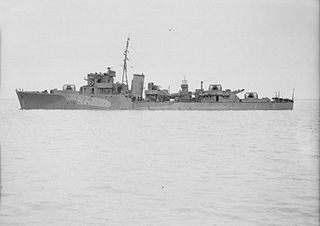
HMS Middleton was a Type II Hunt class destroyer of the Royal Navy and served in the Second World War. Her role was providing support for minelaying operations in the Atlantic and anti-aircraft protection for the North Russian convoys. At the end of the Second World War, Middleton returned to Portsmouth having achieved no less than six battle honours during her brief four years of active service. She remained in reserve until 1955 and was broken up in February 1958.

Convoy PQ 15 was an Arctic convoy sent from Iceland by the Western Allies to aid the Soviet Union during the Second World War. The convoy sailed in late April 1942, reaching the Soviet northern ports after air attacks that sank three ships out of twenty-five.

Convoy PQ 14 was an Arctic convoy sent from Britain by the Western Allies to aid the Soviet Union during the Second World War. Convoys from Britain had been despatched since August 1941 and advantage had been taken of the perpetual darkness of the Arctic winter. German operations against the convoys had been muted due to the need to support Operation Barbarossa, confidence in imminent victory and the small size of the convoys. In late 1941 and early 1942 the Luftwaffe and Kriegsmarine had reinforced Norway with aircraft and ships.
Convoys PQ 9 and 10 were Arctic convoys sent from Great Britain by the Western Allies to aid the Soviet Union during World War II. They sailed together in early February 1942 and arrived in Murmansk without loss.

Arctic naval operations of World War II were the World War II naval operations that took place in the Arctic Ocean, and can be considered part of the Battle of the Atlantic and/or of the European Theatre of World War II.

Convoy QP 11 was an Arctic Convoy of World War II, made up of merchant ships returning from the Soviet Union to Britain after delivering their cargo to the Soviet Union. The convoy consisted of 13 merchant ships, escorted by 18 warships. The convoy was attacked by German destroyers and submarines, suffering the loss of one merchant ship as well as the light cruiser HMS Edinburgh. The German forces lost the destroyer Z7 Hermann Schoemann.
Convoy QP 10 was an Arctic convoy of World War II, consisting of empty merchant ships returning from the Soviet Union after delivering their cargo there. The convoy consisted of 16 merchant ships and an escort of nine warships. The convoy departed Murmansk on 10 April 1942 and arrived in Reykjavik on 21 April. The convoy was attacked by German U-boats and aircraft, resulting in the loss of four merchant ships. Another ship, Stone Street, was damaged by air attack and forced to turn back to the Kola Inlet. The convoy's escorts shot down six German planes and damaged another during the course of the voyage. Later, six merchant ships from Convoy PQ 14 joined QP 10.

Convoy QP 14 was an Arctic convoy of the QP series which ran during the Second World War. The convoy was a return journey of Allied ships from the port of Archangelsk in the Soviet Union to Loch Ewe in the west of Scotland. The British planned to send Convoy PQ 18 from Iceland to Murmansk and when the convoys crossed transfer much of the escort force from the outbound convoy to Convoy QP 14 and escort back it through the most dangerous waters off Norway.
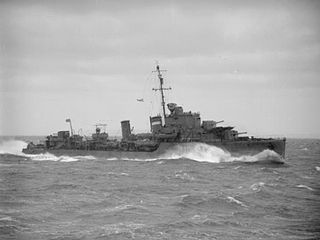
Convoy QP 13 was an Arctic convoy of the PQ/QP series which ran during the Second World War. It was the thirteenth of the numbered series of convoys of merchant ships westbound from the Arctic ports of Arkhangelsk and Murmansk to the United Kingdom, Iceland, and North America.
Convoy QP 1 was an Arctic convoy of the PQ/QP series which ran during the Second World War. It was one of a series of convoys run to return Allied ships from Soviet northern ports to home ports in Britain. It sailed in late September 1941, reaching Allied ports in mid-October. All ships arrived safely.












